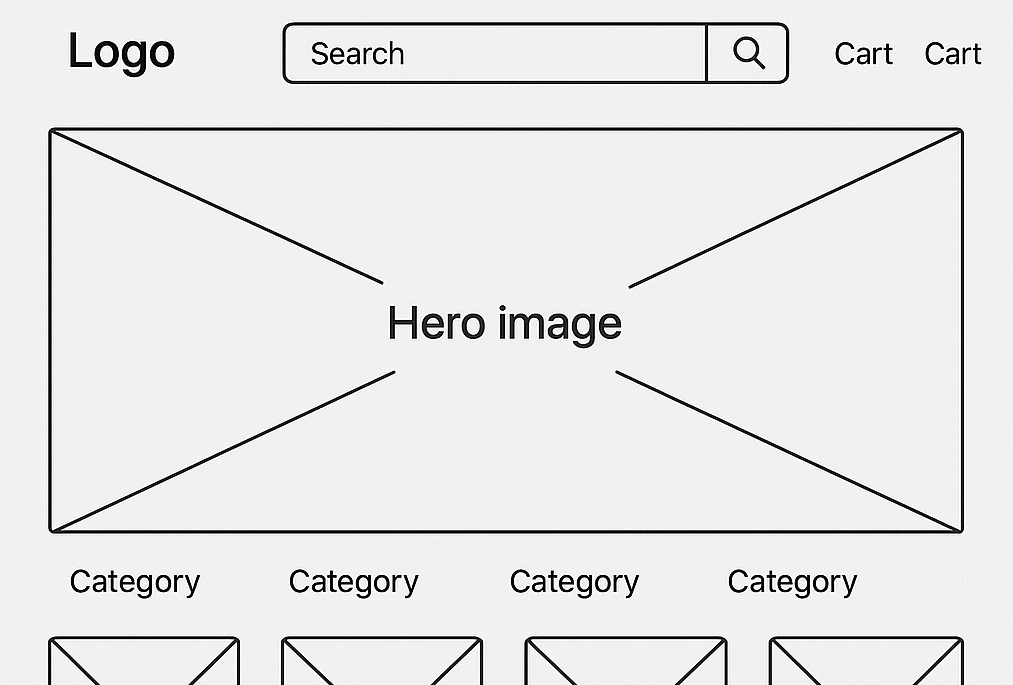The way retailers and agencies will build eCommerce sites will undergo a seismic shift, driven by advancements in artificial intelligence (AI) and the rise of headless ecommerce platforms. With it, the cost of development is going to go down significantly.
AI code generation tools such as Cursor, Windsurf & Lovable are already empowering developers to build sophisticated online stores faster, smarter, and more efficiently than ever before. Coupled with the flexibility of headless ecommerce platforms, which leverage the ubiquity of open-source code on which these models are trained, the combination is already starting to transform how retailers will create and scale their digital storefronts.
Here’s why AI-driven development and headless architecture are the future of ecommerce in the enterprise.
The Rise of AI in Ecommerce Development
Of all the jobs benefiting from recent advancements in AI and in particular language models, software development is the one arguably benefitting the most. A study by GitHub, the code repository used by a majority of software developers, found that developers using AI-powered tools completed tasks up to 2x faster, a stat backed up by a McKinsey study illustrating similar results.
The power of large language models are helping streamline prototyping, coding, optimizing workflows, and enhancing creativity, making them ideal for building complex ecommerce sites. Here’s why they’re already becoming indispensable:
1. Accelerated Development Cycles & Cost Efficiency
Tools like Windsurf, a framework for rapid prototyping, drastically reduce the time it takes to build an ecommerce site. Windsurf excels at generating modular components, enabling rapid iteration of storefront designs. For businesses, this means launching an online store in days or weeks instead of months. By automating repetitive tasks and reducing the need for extensive manual coding, AI tools cut development costs significantly.
2. Lowering the Skill Barrier
AI tools democratize development by enabling non-expert coders to contribute meaningfully. Natural language processing allows developers to describe functionality in plain English—like “create a responsive product carousel”—and receive functional code snippets instantly. This empowers smaller teams or entrepreneurs to build professional-grade ecommerce sites without needing such a large, specialized workforce.
3. Optimization
Ecommerce thrives on user experience, and AI tools excel at creating tailored solutions. Windsurf can analyze user behavior patterns to suggest UI/UX improvements. These tools are trained on vast datasets, including open-source ecommerce frameworks, ensuring they understand the nuances of online retail.
Why Headless Ecommerce Platforms Are the Perfect Partner
While AI tools provide the horsepower, headless ecommerce platforms provide the flexible foundation that makes rapid development possible. Unlike traditional monolithic platforms, headless ecommerce separates the front-end presentation layer from the back-end commerce logic, connected via APIs. This architecture aligns perfectly with AI-driven development for several reasons:
1. Ubiquity of Open-Source Code
Headless platforms are often built on or inspired by open-source ecosystems. AI tools are trained on massive repositories of open-source code—like GitHub’s vast libraries—giving them an intimate understanding of these technologies. When a developer uses AI to query, “integrate the API for product filtering,” the tool can produce precise, battle-tested code because it’s seen countless similar implementations in open-source projects.
2. Flexibility for AI-Generated Frontends
Headless platforms allow developers to build custom storefronts using modern frameworks like React, Next.js, or Vue.js, which AI tools such as Windsurf and Cursor are optimized for. For example, Windsurf can generate a sleek, responsive storefront, while Cursor can integrate it with a headless platform’s APIs. This decoupling means AI tools can focus on crafting unique user experiences without being constrained by rigid templates.
3. Scalability and Modularity
Headless platforms are inherently modular, allowing businesses to swap out or upgrade components—like payment gateways or CMS integrations—without overhauling the entire site. AI tools enhance this modularity by generating plug-and-play code. For instance, The tools can be used to prototype a new checkout flow ensuring it integrates seamlessly with a headless platform’s APIs, enabling businesses to scale or pivot quickly.
The Future of Ecommerce Development
As AI tools like Cursor and Windsurf mature, and headless platforms become the default for enterprise ecommerce, the barriers to creating world-class online stores will continue to fall. The ubiquity of open-source code ensures that AI models have an ever-growing library to learn from, making them smarter and more capable with each iteration. Businesses that embrace this shift will gain a competitive edge, delivering faster, more engaging, and more scalable ecommerce experiences.
In a world where speed, personalization, and adaptability are paramount, the combination of AI-driven development and headless ecommerce is not just a trend—it’s the blueprint for the future of online retail.



